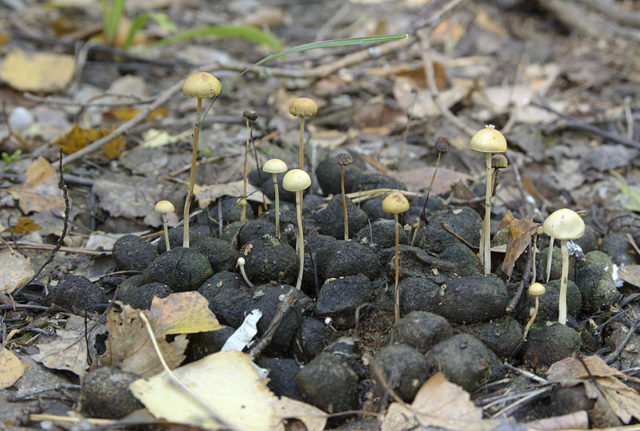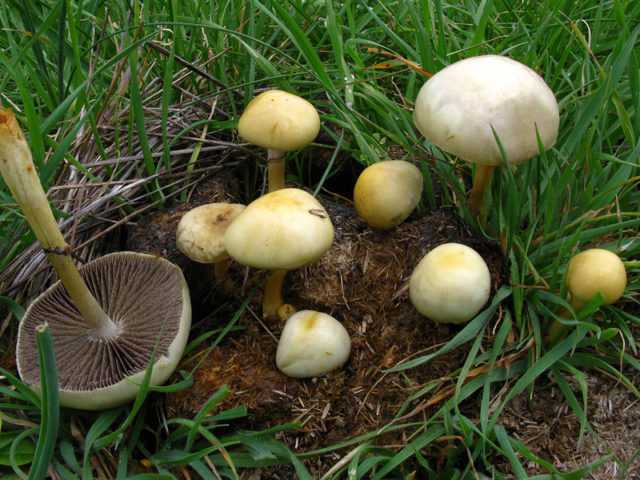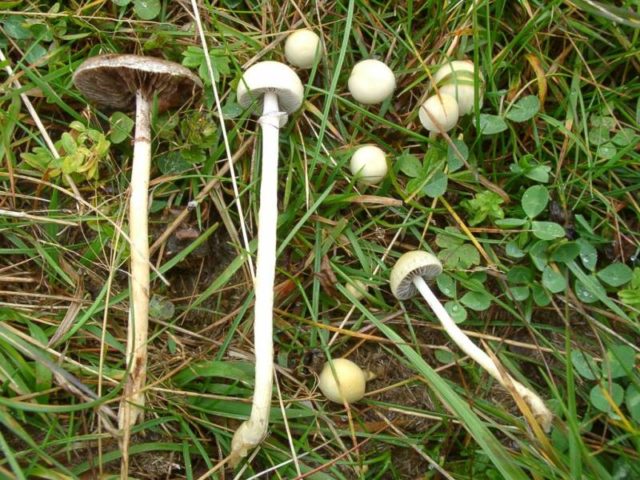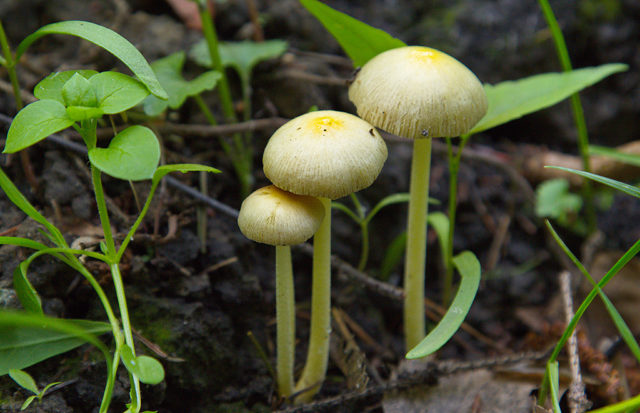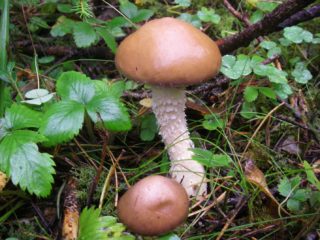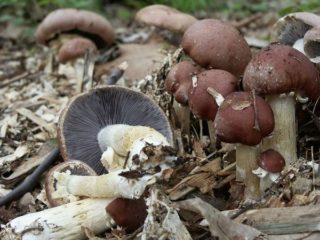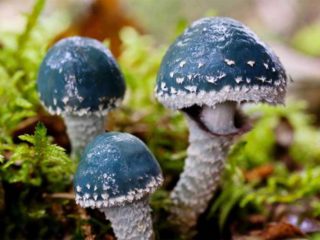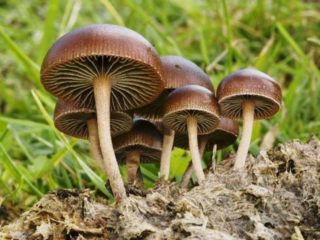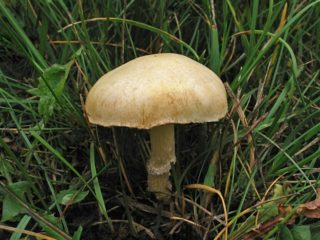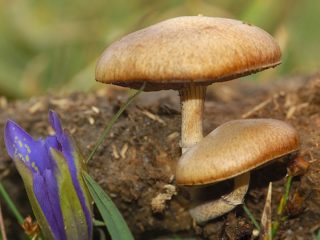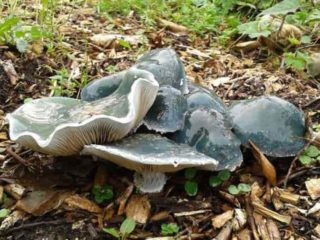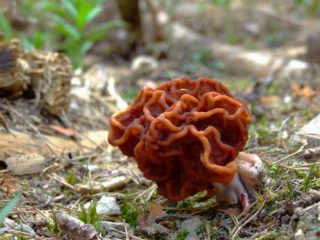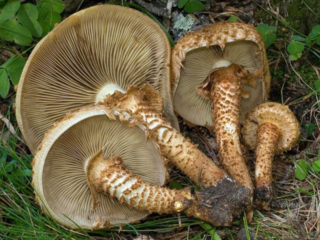Content
Hemispherical stropharia or semicircular troyshling is a habitual inhabitant of manured fields where cattle regularly graze. Light yellow caps with thin and long legs are immediately striking. However, there is no need to rush to collect these mushrooms - they are inedible and, when consumed, cause hallucinations.
What does a hemispherical stropharia look like?
Hemispherical stropharia (Latin Stropharia semiglobata) refers to agaric or lamellar mushrooms of the Stropharia family. It is a fragile-looking small fungus with a disproportionately long stem.
Description of the hat
The cap of the hemispherical stropharia at a young age has the shape of a sphere, as the fruiting body grows, it transforms into a hemisphere without a tubercle in the center, it almost never opens completely. If you make a longitudinal section of the cap, you get an even semicircle, as if outlined by a compass. The diameter of the cap is more than modest - only 1-3 cm. The upper part of the cap is smooth, in rainy weather it is covered with a thin layer of mucus.
The color of the cap can be:
- light yellow;
- ocher;
- lemon;
- light orange.
The center is more intensely colored; the edges of the cover may be present. The pulp is yellowish white.
The back of the cap is represented by a hymenophore of rare wide plates adhered to the pedicle. In young mushrooms, they are painted in a grayish tint, in mature specimens they acquire a dark brown-purple color.
The spore powder is olive green at first, but becomes almost black as it matures. Spores are smooth, elliptical in shape.
Leg description
The leg of the hemispherical stropharia is excessively long relative to the cap - 12-15 cm. In rare cases, it grows straight, often curved and slightly swollen at the base. The leg is hollow inside. In young stropharians, a leathery ring can be distinguished, which quickly disappears with age. The surface of the leg is slimy and smooth to the touch; closer to the base it is finely scaly. The leg of the hemispherical stropharia is colored yellow, but somewhat lighter than the cap.
Where and how it grows
Hemispherical stropharia is found in all regions of Russia. Usually grows in pastures, fields, along forest roads and paths. Prefers greasy, manured soils, can settle directly on a manure heap. In most cases, it grows in groups, the fruiting period is from mid-spring to late autumn.
Doubles and their differences
Due to its lemon-yellow or honey color, hemispherical stropharia is difficult to confuse with other mushrooms.It has the greatest similarity with the inedible golden bolbitus (Bolbitius vitellinus), which also prefers to settle in meadows and fields flavored with animal excrement. In this type of plate, even in old age, they retain their color and do not turn black - this is the main difference between bolbitus.
Is the mushroom edible or not
Hemispherical stropharia is an inedible hallucinogenic mushroom. Its activity is low and may not manifest itself at all, however, it is better to refrain from eating it.
The effect of hemispherical stropharia on the body
The chemical composition of Stropharia semiglobata contains the hallucinogen psilocybin. It causes a psychological dependence in a person, in terms of its effect on the mind, it is similar to LSD. Emotional experiences can be both positive and negative. A mushroom eaten on an empty stomach after 20 minutes can cause dizziness, tremors of the legs and arms, and unreasonable fear. Later, narcotic symptoms appear.
With the regular use of mushrooms containing psilocybin, irreversible psychological changes can occur in a person, in some cases this threatens the complete destruction of the personality. In addition to the negative effect on the psyche, hallucinogens have a detrimental effect on the work of the heart, kidneys and gastrointestinal tract.
Conclusion
Stropharia hemispherical is a common inedible mushroom that should be avoided. Tiny, at first glance, harmless fungi can cause serious harm to the human body.
